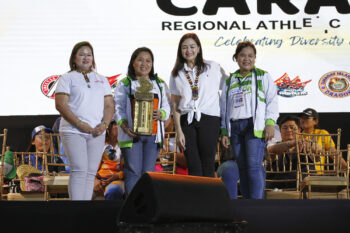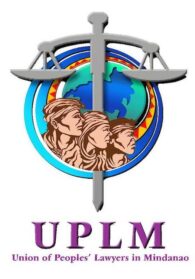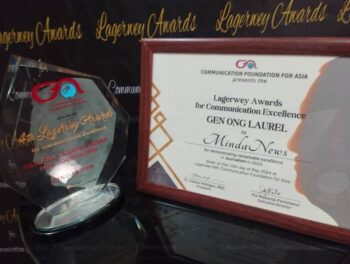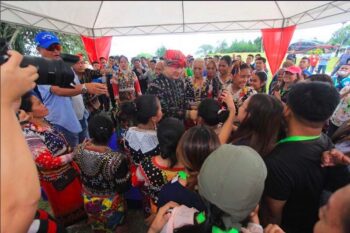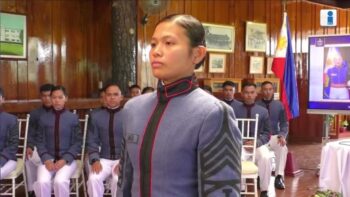(The author is a commissioner at the National Commission on Muslim Filipinos, an agency under the Office of the President. This piece was prepared to serve as an introduction to understand and see the nature of religious educational institutions and their role in enhancing multiculturalism and cultural dialogue/understanding.)
Southeast Asia is a mosaic of cultures. Being a melting pot of civilizations and religious traditions, it has innovated these traditions into expressing a Southeast Asian character.
However, in the globalization of the world, the indigenous nature and culture of the Southeast Asian people have come under threat, both under the globalization of knowledge and culture as well as the threat of transnational movements which carry with them a whole new set of religious, cultural and educational values.
Religious and cultural education has always been the hallmark and bench mark for assessing the impact of cultures and religious traditions in a country and this can also be used as a template for understanding the cultural resilience and depth of a country.
In the Philippines, like in other countries, there has been a big struggle on the clash between indigenization and Arabization of Islam in the public sphere, where because of a globalized culture and the speed of knowledge, there has been social friction between cultural and religious institutions that provide formation to Muslim communities in the Philippines.
This discussion aims to present the roles and influence that cultural and religious institutions provide in the context of cultural and religious education and their proximate role in strengthening multiculturalism and religious pluralism in the Philippines.
Understanding that there are multiple schools of thought of Islam that has embedded themselves into Philippine Muslim Culture, this paper would try to differentiate and clarify unique distinctions in each group and how they have influence Filipino Muslim culture and spirituality.
This article is part of a bigger research in understanding cultural and religious education of Muslims in the Philippines and aims to provide a much clearer perspective in understanding the role of Muslim culture.
Context
The Philippines is a part of a bigger cultural crucible, Southeast Asia. Composed of what is continental Southeast Asia and archipelagic Southeast Asia. Both areas have been the melting pot of various cultures and faith traditions creating culturally symbiotic and multicultural traditions and expressions.
This is manifested in the different tribal customs and social norms exhibited in different places in the Philippines. Among them is the culture of circumcision which although predominantly Southeast Asian Muslim tradition, it is also practiced as a rite of passage for Filipino males.
Currently based on consultations and interviews there are several types of learning institutions in the Philippines:
Cultural learning institutions
It is important to contextualize that there are two types of Indigenous Cultural Communities (ICCs) that exist in the Philippines: Non-Islamized and Islamized Cultural Communities. Both communities pre-exist the present Filipino Nation state and are accorded state protection through legislation and policies. These cultural communities preserve their identities through Cultural learning institutions.
Cultural learning institutions are the oldest form of learning in the Philippines. This is classified under the National Commission for Indigenous Peoples (NCIP) as Indigenous Knowledge Skills and Processes (IKSP). Each Indigenous Cultural Community has a set of identified and documented IKSP which is endemic and native to each group which is taught through either mentoring by cultural shamans (Pakil or Guru among Muslim Indigenous cultural groups), or by established Indigenous Peoples Education schools that are set up either as private educational entities or set up by the Department of Education (DepEd) and recognized by the NCIP.
Another form of cultural learning institution is the School of Living Traditions (SLT) which is created under the auspices of the National Commission on Culture and the Arts (NCCA) wherein Cultural Masters who know traditional cultural arts and crafts, teach and mentor the traditional skills and crafts to members of their cultural communities.
These learning institutions ensure cultural and religious preservation and instill institutional memories that may transcend generations.
Religious learning institutions
Generally these learning institutions focus on the religious education aspect and depends on the level of indigenization of the faith tradition involved. For purposes of categorization we would focus on Muslim religious learning institutions.
In the Philippines, there are nine Islamic schools of thought/groups that exist, which are the Indigenous Islam ( Kamaasan, Islam sa Matua), Sufism, ASWJ (Ahlu Sunna Wal Jamaah Shafii Madhab and Ashari Aqeeda), Shiism, Salafi Manhaj, Jamaah Tabligh, Hizmet (fethullah gullen), Resale Noor and Ahmadiyyah groups. Each of these groups has similar or unique characteristics that make them need to establish their own religious learning institutions.
- Indigenous Islam( Kamaasan, Islam sa Matua) considering that Indigenous Islam is an evolution of pre-Islamic practices and the fusion of the first three schools of thought that arrived (Sufism, ASWJ and shiism) then many of the practices of Indigenous Islam contains a combination of these belief systems. They are preserved through two types of learning institutions:
a. Pag Guru (mentorship) wherein individuals normally seek out “masters” where to train in Islam and indigenous knowledge. This generally is informal in nature and revolves around the relationship between teacher and student and this may involve martial prowess (Ilmu pag-usug iban bunu), romantic prowess (pagsihil and paghinang hinang) and other forms of esoteric knowledge. Instruction may focus on mental and physical preparation before acceptance by teachers.
b. Paglihal (Quran memorization), this is normally a rural community based where kids are sent to an elderly (normally) female Quran reciter where they are asked to set up their Quran’s on a “lihal” (bookstand) to be able to read. After completion of the reading of the Quran they are given “pagtammat” a ceremony leading to the completion of reading the Holy Quran.
This religious learning can also be categorized as a cultural learning institution due to its indigenization.
2. Sufism.
The arrival of Sufism and ASWJ through the Shariffs and the Makhdumins has indigenized them, butt current Sufi groups use two types of religious learning institutions:
a. Dergahs/Khanaqahs where their sufi sessions and lessons are undertaken.
b. Madrassahs that are either run by Sufi scholars themselves or scholars belonging of the ASWJ
Sufism currently continues to provide spiritual guidance through these systems and some offer a mentor-student approach to understanding and learning Islam.
- ASWJ (Ahlu Sunna wal Jamaah, Shafii Madhab and Ashari Aqeeda)
Both the ASWJ and the Salafi have similar institutions except for the content that their religious learning institutions teach. Their madrassahs normally have three levels:
a. Primary (I’daadi/ Ibtidai)
b. Secondary (thanawi)
c. Higher education (Kulliyah)
Their scholars primarily may come from abroad such as Al-azhar, or from Syria or (then) Libya, Pakistan, Turkey or other countries where ASWJ remains a strong and influential religious group.
The Presidential Decree 1083 also known as the Code on Muslim Personal Law (CMPL) passed during the Marcos era recognizes the Shafi’I Madhab among the three other madhahibs (Hanafi, Maliki and Hanbali) as the official madhab of the Filipino Muslims following the ASWJ.
- Shiism.
Although Shiism came earlier together with ASWJ and sufism in the early period, it dissipated until the return of shiism through the 1960’s.
The religious education system employed by shias in the country are of three classifications:
a. Regular madrassah which may have (or not) elementary, secondary and tertiary levels
b. Weekend madrassah which is a primarilly English based instruction with curriculum developed for non-Arabic speakers focusing on teachings the essentials of Islam from a belief, jurisprudential and practical level
c. Preparatory Hauza (seminary) which prepares students before they are to be deployed for traditional Hauza studies either in Iraq, Pakistan, Lebanon or Iran. The content is predominantly Arabic language preparation and introductory Hauza subjects so they may be prepared for the time of ethical behaviour and mental discipline in the Shia Hauza.
- Salafi Manhaj
The Salafi Manhaj arrived and started their rise to influence during the 1980s when students were sent abroad for religious scholarships to Salafi educational institutions like Saudi Arabia, Pakistan Sudan among others. Their religious educational institutions differ as follows:
a. Regular madrassahs which may (or may not) offer multi-level classes from elementary, secondary to college level
b. Mahad which focuses on higher Islamic education classes which are preparatory for Islamic scholars such as the one in Baguio (Al-Maarif education center) or in Marawi (Darul Imam Shafii)
c. Islamic centers which are primarilly Islamic education for those who may not have the luxury of time to study formal Islamic education, their clientele may range from students studying in high school or college, professionals or converts to Islam
There is yet no consensus among them on usage of the term Salafi or Manhaj Salafi as an external identifier however there are identifiable indicators if a madrassah, group or individual follows the Salafi Manhaj.
- Jamaah Tabligh.
Being a social and religious movement, the Jamaah Tabligh has several mechanisms in religious education. They have three mechanisms:
a. They have centralized system known as Markaz(centers) located in areas where they have a strong pressence such as the Philippines, they conduct religious classes for the guidance of their members.
b. They also conduct Bay’an(discussion sessions) in Masjid during their Khuruj (proselytization) in mosques
c. Some of their religious leaders/Ulama set up madrassahs that follow what is elaborated by their Nizamuddin Markaz (main center in India).
- Hizmet (Fethullah Gullen)
Hizmet being a religious movement (Jemaat) they have a system that is based on discussion circles (Dersanes) wherein they discuss religious issues. The Hizmet movement evolved and was heavily influenced by ideas of Resale Noor and is a Sufi modernist movement. Their group arrived in the Philippines in the early 80’s. Their educational institutions mostly focus on science and mathematics.
- Nurculuk (Resale Noor)
The Resale Noor group was founded by followers of Bediuzzaman Said Nursi. It arrived in the Philippines in the early 90’s. Their religious learning institution is Dersane also known as Madrassah Nuriyyah. Since the tradition is based on Said Nursi’s guidance, it has remained a large informal system where knowledge and advancement in understanding religion is based upon mutual recognition of ones understanding of Islam as understood in Nursi’s Magnum Opus, the Resale Noor, a 20 volume commentary of the Quran and Islam for the modern era.
Their Dersanes are separated according to Gender which also function as boarding houses for their young people who study in Colleges and universities. The uniqueness of this group is that they have developed teaching materials for Islam which are suitable to be integrated for Islamic subjects from elementary, secondary to College levels.
Their curriculum has been adopted by several schools in the Philippines and that as of present, this group has been designing very appropriate value centric Islamic curriculum which aims to answer Muslims challenges in the modern day and age.
- Ahmadiyyah groups.
Ahmadiyah Imam Institutions are called Jamia Ahmadiyya (جامعہ احمدیہ) where potential propagators join them after High School or after Bachelors and the degree is called Shahid and takes seven years to graduate. For Imams, they also have degrees for less duration like three or five years depending on the need of hte country specifically. They don’t have an official degree-issuing madrassah in the Philippines. But they have regular weekend classes for children. To prepare missionaries, they have to send their people to another country for theological studies.
- Other religious learning institutions.
There are other religious learning institutions that may be dependent on the orientation of the manager of the institutions or if by under the Philippine government, dependent on the curriculum. Among these other institutions are:
a. Torilwhich are local boarding schools which are adaptation of the Southeast Asian Pesantren model. In the Philippine Context, this has evolved into more of a orphanage/boarding school where children are sent for formation (tarbiyyah).
b. DEPED ALIVE (Department of Education Arabic Islamic Values Education) Madarisin elementary school levels
c. Integrated Islamic schoolswhich comply with required DEPED educational subjects and including Islamic subjects without compromising either the government requirement of subjects for K-12 education at the same time ensuring their students have the minimum number of Islamic subjects.
What is important context in understanding these religious groups is that they arrived in a particular historical period of the Philippines and that the level of localization each type of religious institution is dependent on the level of indigenization and Arabization of each religious educational institution.
(The author is both a member of the academe and a government official addressing concerns of Muslim in the Philippines. He has written several articles, monographs and researches on Muslims in the Philippines and has been one of the leading subject matter experts on Prevention and countering violent extremism in the Philippines)

